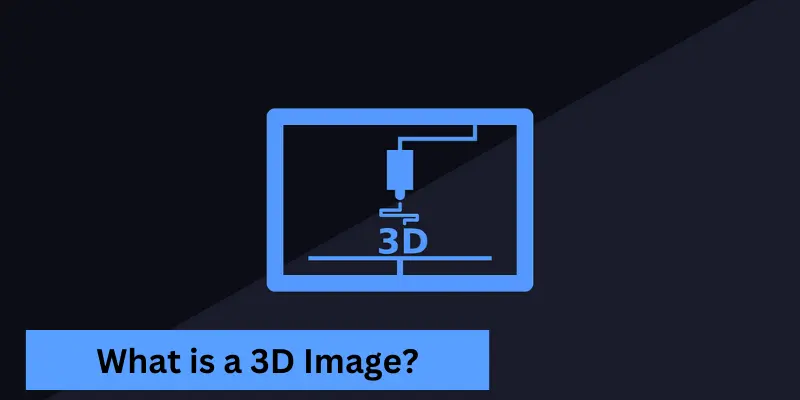What is a 3D Image? Understanding Its Creation & Uses
Published: 02 Feb 2025
A 3D image is a digital representation that adds depth, width, and height to an object or scene, creating a more lifelike and immersive experience than traditional 2D images.
From enhancing medical diagnostics to bringing animated characters to life in films, 3D images have a wide range of applications. In this article, we’ll explore what 3D images are, how they’re created, and how they’re revolutionizing industries across the globe.

What is a 3D Image?
In the digital world, a 3D image is a visual representation that has three dimensions: width, height, and depth. This contrasts with traditional 2D images, which only capture two dimensions: width and height. 3D images allow us to see objects and scenes in a more lifelike, three-dimensional way, providing depth and a sense of spatial awareness.
From healthcare to entertainment, 3D images have revolutionized many industries by enabling more realistic simulations and creating a better understanding of complex objects. But how exactly do these images work? What makes them so special? In this article, we’ll explore the concept of 3D images, how they’re created, their applications, and their potential future in various industries. What is Apple 3D Touch on iPhone?
How Does a 3D Image Work?
To understand 3D images, it’s important to know how they differ from regular 2D images. Traditional images are flat. They represent objects or scenes in a way that focuses only on width and height. However, 3D images provide depth, creating the illusion that the image exists in a space with real-world dimensions.
There are two primary ways 3D images are perceived: through stereoscopic vision or monoscopic vision.
Stereoscopic Vision:
This is the most common way people view 3D images. It uses two slightly offset views of the same scene, one for each eye. The brain then combines these two views to create a perception of depth. This is how we perceive 3D when using 3D glasses in movies or VR (Virtual Reality) systems. 3d computer devices
Monoscopic Vision:
This type of 3D image doesn’t require special glasses. It’s often used in digital art, gaming, and some forms of interactive media. It relies on the creation of depth and perspective within the image itself, allowing viewers to get the illusion of a 3D object even without wearing 3D glasses.
How Are 3D Images Created?
Creating a 3D image involves several steps, depending on the type of 3D image being produced. Here are the main methods for creating 3D images:
1 3D Modeling
In 3D modeling, artists or designers use specialized software to create digital representations of objects or scenes. These models can be as simple as a geometric shape or as complex as a human face. Software such as Blender, Autodesk Maya, and 3ds Max are commonly used for 3D modeling.
The process involves:
Shaping:
The object or scene is created in a virtual 3D space.
Texturing:
The surface of the model is given details, like colors, patterns, or textures (such as the skin of a fruit or the material of a building).
Lighting:
Proper lighting is added to simulate how light would interact with the object.
Rendering:
Finally, the 3D model is rendered into an image or animation, creating a final output that looks like a real-world object.

3D Scanning
3D scanning is a technology that captures real-world objects and converts them into 3D digital models. Scanners use lasers, light, or even X-rays to gather data about an object’s shape and dimensions. Once scanned, the data is processed and translated into a 3D model.
Common 3D scanning methods include:
Laser Scanning:
Scans an object’s surface and collects data points to create an accurate 3D representation.
Photogrammetry:
Uses multiple photographs taken from different angles to create a 3D model.
CT Scanning:
Common in healthcare, where detailed scans of the human body are captured to create 3D models for medical purposes.
3D Rendering
Rendering is the process of transforming a 3D model into a 2D image or animation. The 3D model is virtually “lit” and “textured” within the rendering software to produce realistic images or videos. Some common rendering software includes V-Ray, Arnold, and RenderMan.
Types of 3D Images
- Different Kinds of 3D Images
- Categories of 3D Images
- Varieties of 3D Images
- 3D Image Types and Their Uses
- Types of Three-Dimensional Images
- Forms of 3D Visual Representations
- Different Formats of 3D Images
- 3D Image Categories and Examples
- Kinds of 3D Digital Images
- Various Types of 3D Visuals
- 3D Image Variations and Applications
- Exploring Different 3D Image Formats
- Distinct Types of 3D Models and Images
- Classifications of 3D Images
- Diverse Forms of 3D Imaging
- 3D Image Structures and Their Purposes
- Range of 3D Visual Types
- 3D Image Classifications and Styles
Applications of 3D Images
The uses of 3D images extend far beyond just entertainment. They are used in a variety of fields, transforming industries by improving accuracy, visualization, and user experience.
Healthcare
3D imaging in healthcare is invaluable for doctors, surgeons, and medical researchers. Medical images like CT scans, MRI scans, and ultrasound scans can be rendered into 3D to provide a clearer, more accurate view of a patient’s body. Surgeons use 3D imaging to prepare for complex surgeries, planning their procedures with precision before making any incisions.
Entertainment and Gaming
3D images have revolutionized the entertainment industry. Movies, video games, and virtual reality experiences all rely on 3D images for realism and immersion. In movies, 3D animation brings characters and worlds to life, while in video games, 3D models make gameplay more engaging and visually appealing.
Product Design and Manufacturing
In product design, engineers use 3D modeling to create virtual prototypes. These 3D models allow designers to simulate how products will function, how they will look, and even how they will be assembled. 3D images help identify potential flaws before physical production begins, saving time and money.
Architecture
Architects use 3D imaging to visualize building designs, helping clients and stakeholders better understand how a project will look once completed. These images provide accurate depictions of buildings and structures, including interior designs, landscaping, and even how natural light will affect the space.
Education and Training
3D images are increasingly being used in educational contexts. They help in explaining complex topics, such as human anatomy or historical reconstructions. In training environments, 3D simulations provide hands-on learning experiences, allowing students to interact with objects in ways that would be difficult in the real world.
Benefits of 3D Images
3D images offer numerous advantages across different industries by providing enhanced realism, depth, and clarity. They enable users to interact with and explore objects or scenes from multiple angles, leading to more informed decision-making, better planning, and improved communication. The benefits of 3D images span from creating lifelike visualizations in entertainment to revolutionizing diagnostics in healthcare.
Key Benefits of 3D Images
- enhanced Realism: Provides lifelike visualizations.
- Improved Accuracy: Crucial for precision in fields like healthcare and design.
- Better Visualization: Multiple viewing angles for clearer understanding.
- Cost-Effective Prototyping: Saves time and money in product design.
- Efficient Planning: Helps plan projects before physical implementation.
- Enhanced Communication: Simplifies explanation and understanding.
- Immersive Experiences: Creates engaging virtual and gaming environments.
- Time-Saving: Speeds up design and decision-making processes.
- Interactive: Users can engage with and manipulate 3D models.
- Data Insights: Visualizes complex data for deeper analysis.
The Future of 3D Images
The future of 3D images is incredibly exciting. With the growth of virtual reality (VR) and augmented reality (AR), we are moving toward a world where 3D images will be a fundamental part of everyday life. As technology continues to advance, 3D images will become more realistic, more interactive, and even more integrated into industries such as healthcare, entertainment, education, and design.
Conclusion
In summary, 3D images provide a deeper, more immersive experience than traditional 2D images. They are created through techniques like 3D modeling, scanning, and rendering, and they have widespread applications in industries such as healthcare, gaming, architecture, and product design. As technology advances, the role of 3D images in our daily lives will continue to expand, offering new opportunities for enhanced visualization and interaction.
- What does a 3D image represent?
A) Width and Height
B) Height and Depth
C) Width, Height, and Depth
D) Color and Texture - Which of the following is a common tool for creating 3D models?
A) Photoshop
B) Blender
C) WordPress
D) Excel - How do stereoscopic 3D images create depth?
A) Using only one camera angle
B) Using two slightly different perspectives for each eye
C) By changing the brightness of an image
D) Using 3D glasses with no specific lenses - Which industry uses 3D imaging for medical scans?
A) Gaming
B) Healthcare
C) Music
D) Transportation
FAQs ❓
A 2D image only has width and height, making it flat. On the other hand, a 3D image adds depth, allowing you to perceive objects as having realistic dimensions. 3D images are more interactive and can be rotated or viewed from different angles for better understanding. 🌍🔍
3D images are typically created using 3D modeling software, scanning technology, or rendering techniques. These methods allow designers to build, capture, and visualize objects or scenes in three dimensions (width, height, and depth). 🖥️📸






